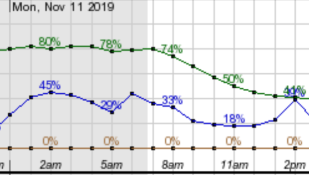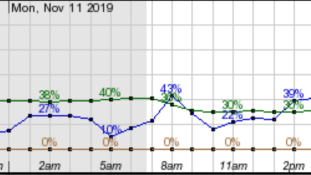NedL
Subscriber
For most of the world except Asia, transit of Mercury will be visible tomorrow.
Next one won't be until 2032.
You need special solar filters to observe it, although it would be safe to use eyepiece projection with a pair of binoculars or a small scope ( WITHOUT LOOKING THROUGH IT, you aim the binoculars at the sun, and project the image through the eyepiece onto a piece of paper. It's possible to make an image 4 or 5 or 6 inches across this way which should be good enough to pick out Mercury as a small black disk. Probably the easiest way is to put the paper on a small stand ( like a music stand ) or tape it to a piece or cardboard or wood that you can prop up at an angle, then hold the binoculars in your hand to project the image onto the paper. Once you see the dim image, you can focus it as usual. Don't ever look at the sun though a camera or any kind of scope or binoculars without a solar filter made specifically for that purpose.
Here on the W coast of the US, it will be in progress when the sun rises.
It's supposed to be foggy tomorrow morning where I live, so I'll be heading inland until I get out from under the fog.
I have a small hydrogen-alpha filter solar telescope that I will use, mostly for visual, but I might try to make a couple images ( digital ).
Next one won't be until 2032.
You need special solar filters to observe it, although it would be safe to use eyepiece projection with a pair of binoculars or a small scope ( WITHOUT LOOKING THROUGH IT, you aim the binoculars at the sun, and project the image through the eyepiece onto a piece of paper. It's possible to make an image 4 or 5 or 6 inches across this way which should be good enough to pick out Mercury as a small black disk. Probably the easiest way is to put the paper on a small stand ( like a music stand ) or tape it to a piece or cardboard or wood that you can prop up at an angle, then hold the binoculars in your hand to project the image onto the paper. Once you see the dim image, you can focus it as usual. Don't ever look at the sun though a camera or any kind of scope or binoculars without a solar filter made specifically for that purpose.
Here on the W coast of the US, it will be in progress when the sun rises.
It's supposed to be foggy tomorrow morning where I live, so I'll be heading inland until I get out from under the fog.
I have a small hydrogen-alpha filter solar telescope that I will use, mostly for visual, but I might try to make a couple images ( digital ).









